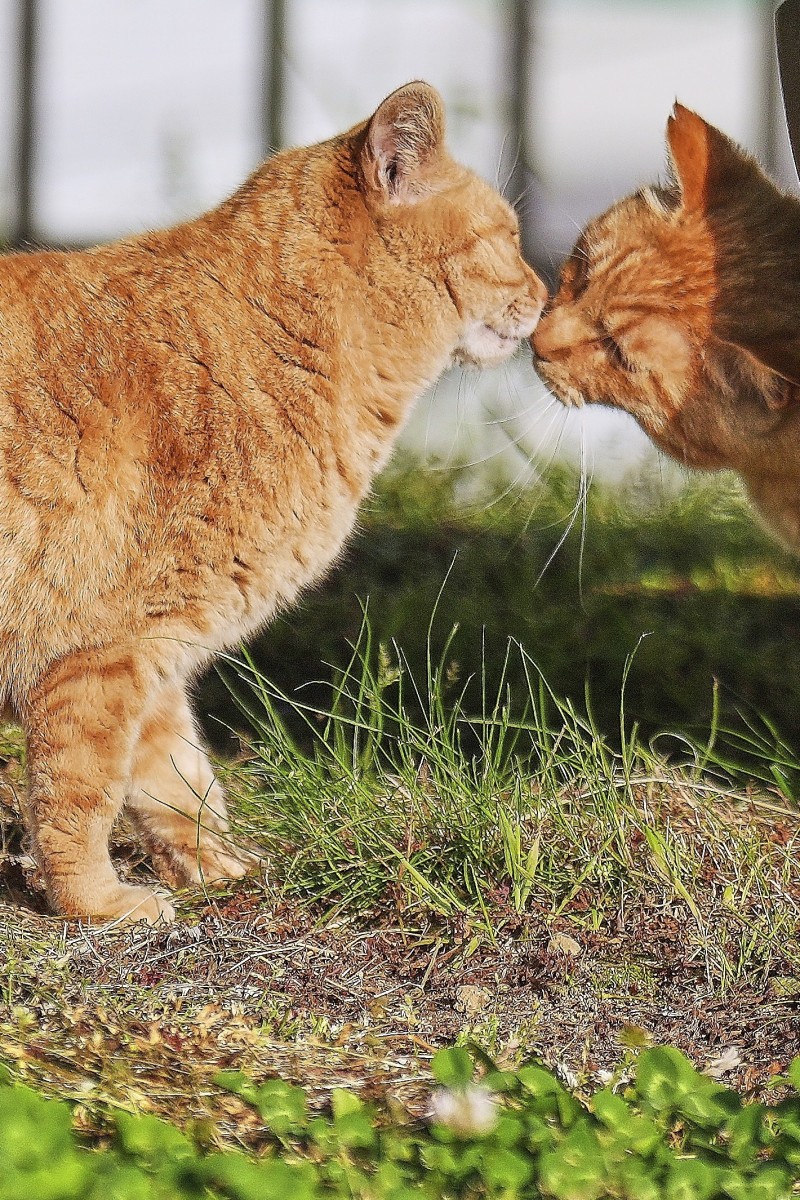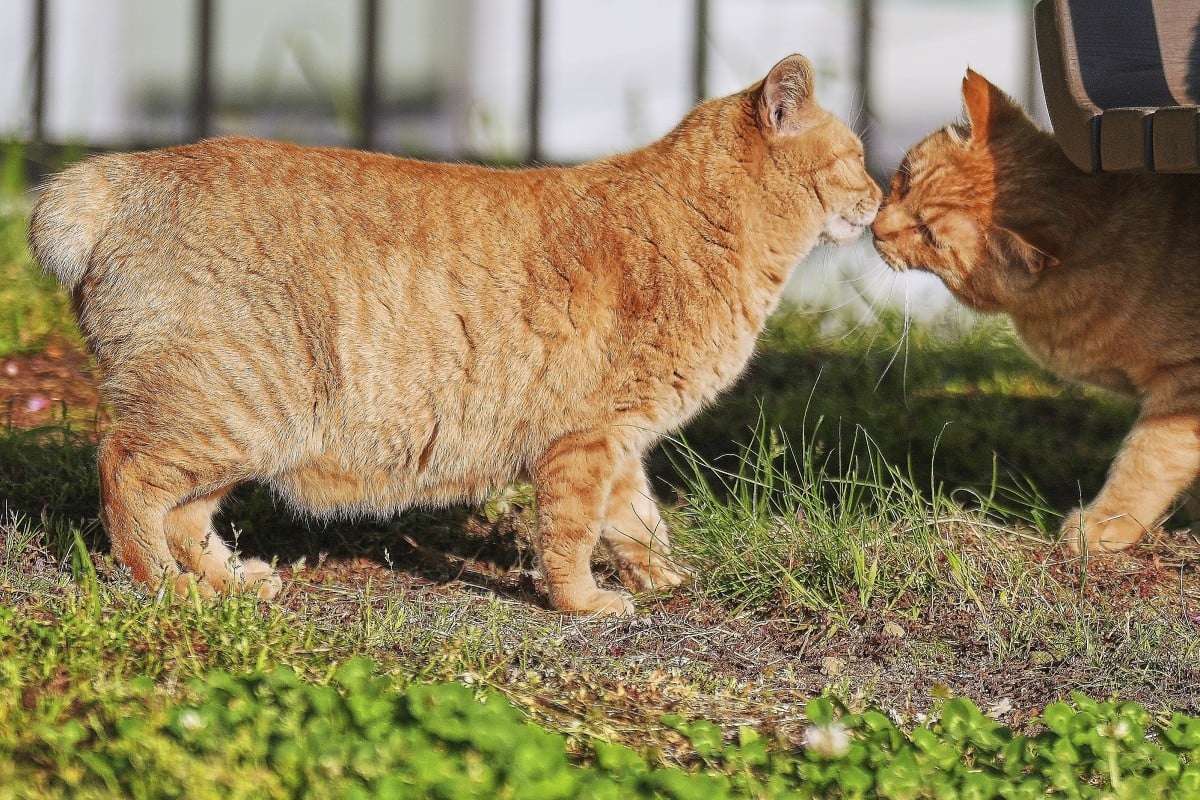
Spark Study Buddy (Explorer): Bobtail cats inspire shrine, attract tourists in southern Japan
This page has an easy read with questions to test your understanding and work on your English skills
 Bobtail cats relax at a park in Nagasaki in southern Japan. Photo: AP
Bobtail cats relax at a park in Nagasaki in southern Japan. Photo: APContent provided by British Council
[1] In Japan, bobtail cats are considered good luck, and Nagasaki is the place to find them. They are known as omagari neko (bent-tail cats) or kagi neko (hook cats). They have their own society of admirers and even a dedicated Shinto shrine.
[2] Their tails come in different varieties. These include hook-shaped at the tip, curved or in a bun, explained Kazuya Hideshima, a worker at Omagari Neko Shrine and member of the Nagasaki Cat Society. Studies have shown that almost 80 per cent of cats in Nagasaki were bobtails. This number is twice as high as in any other part of Japan.
[3] Japanese cats are believed to have come from China in the 6th century with Buddhist monks. They served as rat hunters to protect religious scriptures on ships. Meanwhile, Nagasaki bobtails have their roots in the Dutch East Indies. The city was the only foreign port during Japan’s closed era, from the 17th to 19th centuries. They hunted rats to protect shipments on their way from Southeast Asia to Japan, according to Nagasaki cultural officials.
[4] Soshin Yamamoto is a veterinarian and cat specialist. He said the large population of bobtails in Nagasaki is likely the result of a genetic mutation. The trait reproduced in a relatively isolated environment. “Having bobtails is no problem for most cats living a normal life, as long as they live near humans and aren’t jumping and running around like wildcats in a forest,” he said.
[5] Nagasaki residents hope the cats can attract tourists and help businesses. Natsuno Kani is a 50-year-old tourist from Tokyo who recently visited the bobtail shrine. She said she knew Nagasaki was famous for bent-tail cats.
[6] Abigail Tarraso is an artist from Spain. She is based in Takeo City in the neighbouring Saga prefecture. Tarraso was unfamiliar with the species, which is not as popular in Spain. “Today is the first time in Nagasaki that I have ever heard of this,” said Cindy Bi, an American who is also an artist. “I am excited to look for them. Maybe we will see a few.”
Source: Associated Press, May 29
Questions
1. Omagari most likely means … according to paragraph 1.
A. shrine
B. cat
C. bent-tail
D. Nagasaki
2. What are three varieties of cat tails mentioned in paragraph 2? (3 marks)
3. In paragraph 3, the Buddhist monks brought cats on ships to ...
A. keep them company.
B. protect them from evil spirits.
C. bring them good luck.
D. get rid of rats.
4. What can’t bobtail cats do as well as other cats, according to paragraph 4?
5. Based on paragraph 6, … Tarraso … Bi is familiar with bent-tail cats.
A. neither; nor
B. neither; or
C. either; nor
D. either; or
6. Arrange the words below to form a grammatically correct sentence. Begin the sentence with a capital letter and end with a full stop.
believe / fortune / the / that / Japanese / cats / good / bobtail / bring
Answers
1. C
2. hook-shaped at the tip, curved or in a bun
3. D
4. jump and run
5. A
6. The Japanese believe that bobtail cats bring good fortune.
